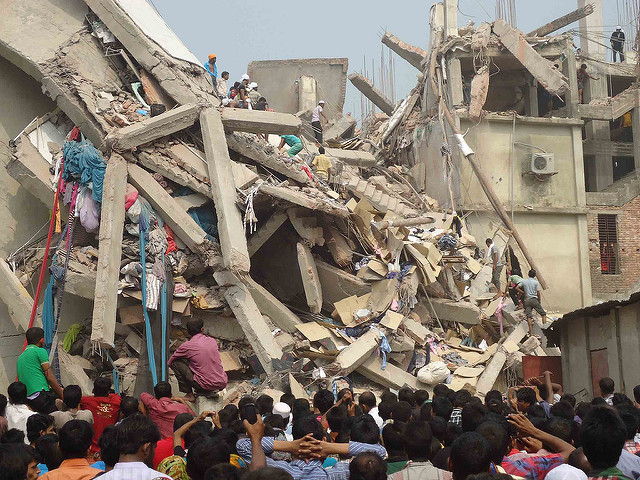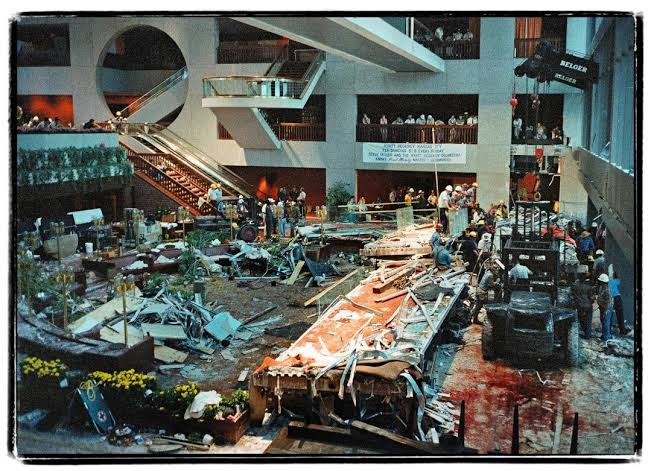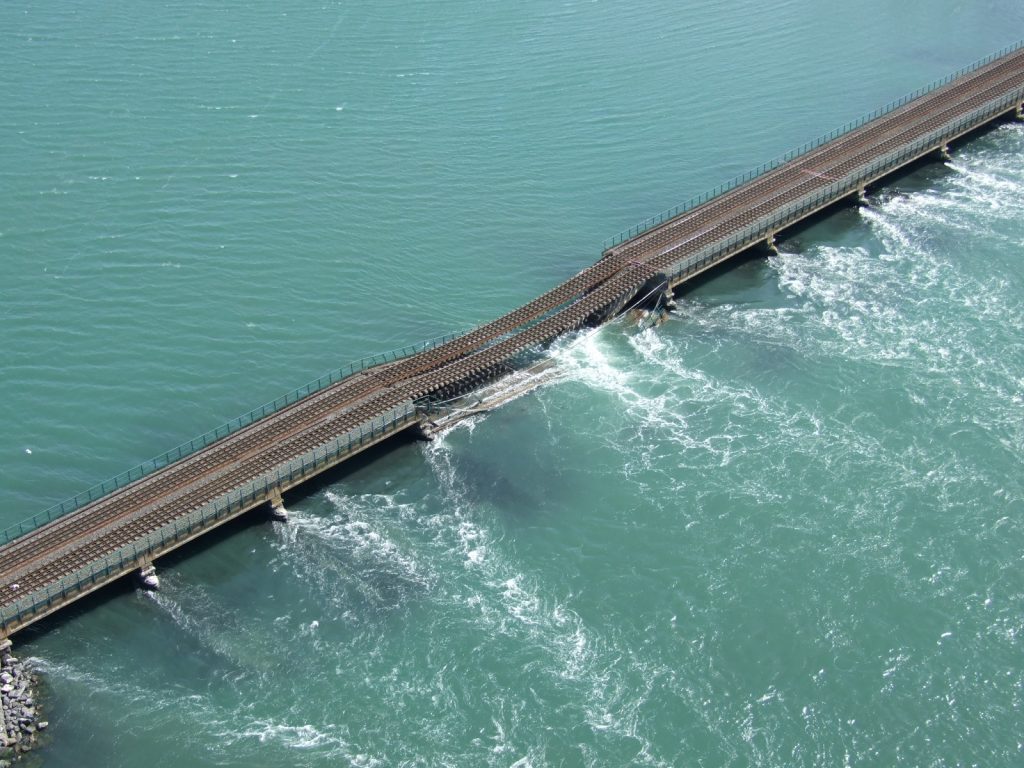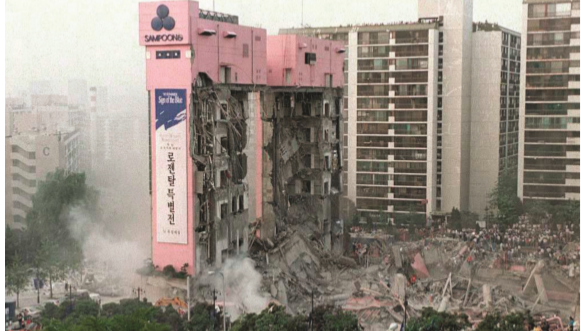As with almost every structural failure, it is the human factors that holds answers as to why the opportunity to forestall the failure was missed. In this article the role played by human factors in structural failures is explored.

The history of structural engineering is plastered with experiences, where engineers have had to learn, the hard way from structural failures. These experiences are often very dreadful for all parties, from the professionals involved to the structure’s owner, and even people whose only involvement is “being in the wrong location at the wrong time.” Human lives are lost, assets are destroyed, the immediate surrounding becomes a mess from the ruins of the collapse. Hence, structural failures are not something to be acclaimed, however, they play an important role in providing engineers with the opportunity to learn lessons in order to forestall recurrences.
Structures don’t just fall down! When they do, a lot of things would have been permitted to go wrong. Ken Karper, a forensic engineer submits that structural failures are the results of a variety of causes which can be grouped into technical factors and human factors. Think about technical factors as issues around design and implementation and human factors as purely human and procedural issues. As with almost every structural failure, while the technical factors that would’ve caused the collapse are very present, it is the case that the human factors, holds answers as to why the opportunity to forestall the failure was missed.
What are human factors? Neal Fitzsimons another forensic engineer, describes this as the four horsemen of engineering apocalypse: ignorance; incompetence; negligence and avarice. In other words, human factors are those issues that can affect the reliability of those making decisions leading to mistakes. Examples include, miscommunication, lack of concentration, memory loss and general human fallibility.
Managing human factors is not just critical to avoiding structural failures during the design and construction phase of a structure but in fact, equally important throughout its lifetime. Having said this, a review of structural failures provides a useful reminder of the typical human factors that may be encountered by engineers involved in the design, construction, operation and maintenance of structures
Let’s look at some case studies where the opportunities to avert structural failure was missed due to human factors.
I-35W Bridge – ‘Implicit Assumptions’
Just after 6pm on the 1st of Aug, 2007, the main section of the I-35W Bridge in Minnesota, Minneapolis collapsed 33m into the Mississippi river, resulting in 13 fatalities and several causalities. In the aftermath of this collapse, the National Transportation and Safety Board (NTSB) carried out a comprehensive investigation to determine why this failure occurred. The National Transportation Safety Board (NTSB) investigation report identified under-sized gusset plates, in combination with increases in dead and live load on the bridge, as the cause of collapse.

While the aforementioned reasons were actually the cause and resulted from a design error, the primary culprit was a human factor – implicit assumption. Implicit assumption was the reason this error went unnoticed for 40 years despite numerous opportunities where the design error would’ve been uncovered. The implicit assumption was a generally held belief amongst designers that gusset plates are more conservatively designed. Amongst other human factors identified by the NTSB in its report includes:
See: The I-35W Bridge Failure: Another Instance of Implicit Assumptions
- “Even though the bridge design firm knew how to correctly calculate the effects of stress in gusset plates, it failed to perform all necessary calculations for the main truss gusset plates of the I-35W bridge, resulting in some of the gusset plates having inadequate capacity.”2
- “The design review process used by the bridge design firm was inadequate in that it did not detect and correct the error in design of the gusset plates.”2
- “Neither Federal nor State authorities evaluated the design of the gusset plates for the I-35W bridge in sufficient detail during the design and acceptance process to detect the design errors in the plates, nor was it standard practice for them to do so.”2
- During the bridge’s lifetime a number of load ratings were undertaken. However, the NTSB investigation found that the capacity of the gusset plates was not evaluated as part of these load ratings and concluded that had the “American Association of State Highway and Transportation Officials guidance included gusset plates in load ratings, there would have been multiple opportunities to detect the inadequate capacity of the U10 gusset plates of the I-35W bridge deck truss.”2
- The potential for failure was exacerbated “because bridge owners generally consider gusset plates to be designed more conservatively than the other members of a truss.”2
Hyatt Regency Walkways – ‘Negligence’
At the peak of the global financial crisis in 2008, the queen of England questioned why nobody saw this coming, and someone was reported to have answered by saying it happened because nobody actually saw it coming.
It was 17th July 1981 when approximately 160 people gathered in the atrium of the Hyatt Regency Hotel for tea. The second-floor walkway held 40 people with more people on the fourth-floor walkway. Shortly after 7pm that day, guests heard popping noise and suddenly the fourth-floor walkway collapsed into the second-floor walkway, both walkways then fell to the ground. There were over 100 fatalities and over 200 casualties.

In the aftermath, an architectural engineer was hired to investigate the cause of the structural failure. The engineer would conclude that the collapse was a result of a change in the design of the walkway steel hanger rods. This change wasn’t as a result of a lack of understanding of how to design steel hanger rods, as even an engineering student in his first year would have spotted the design flaw that caused the failure. This was purely due to a human factor in the form of negligence, at all levels.
The steel fabricators during the implementation stage objected to an earlier agreed idea of a single rod system for both walkways and sort permission to change this to a double rod system. This permission was granted without any check on steel connections. At the time the responsibility for who conducts checks on shop drawings was not one that was well defined, albeit the ultimate responsibility for the stability of the structure rests on the structural engineer. As a result, not the steel fabricator bothered with a check, not the outsourced detailer, not the technicians, not even the structural engineers did. They could all have, but nobody did. Perhaps, they all trusted someone else to have carried out this check.
See: The Collapse of the Hyatt Regency Walkways – A Question of Ethics
There’s a tale titled, “whose job is it, anyway?” It goes Thus:
“There was a very important job to be carried out by four people named Everybody, Somebody, Anybody and Nobody. Everybody was sure that Somebody would do it. Anybody could’ve done it but Nobody did. When it appears that Nobody did it, Somebody got angry because it was Everybody’s job. I mean, Everybody thought Somebody could do it, but Nobody realized Everybody wouldn’t do it. It turned out Everybody blamed Somebody when Nobody did what Anybody could’ve done.” This summarizes the story of the second deadliest structural failure in all of America’s history.
Malahide Viaduct – ‘Corporate Memory Loss’
22 minutes past 6pm on 21st of August, 2009, a train was travelling across the Malahide viaduct just outside Dublin, Ireland when it was discovered that pier 4 of the viaduct had collapsed into the Estuary below, resulting in the partial collapse of two spans. An investigation led by the Railway Accident Investigation Unit (RAIU), concluded that scour action was the ultimate cause of the collapse. In its report, it says “Scour action had undermined the foundation of pier 4 leading to the progressive collapse of the viaduct.” Was this collapse as a result of this technical factor alone? Far from it!

While the technical factors that led to this collapse are there, it is however, still the human factors that allowed and played the most significant role in the collapse.
The RIAU investigation termed this “corporate memory loss.” Despite the long history of scouring awareness and prevention program, the management of Iarnród Eireann, tasked with the management of the viaduct, did not anticipate this as a potential for failure.
See: The Collapse of the Malahide Viaduct
The corporate memory loss occurred because a former staffer of the national railway system operator of Ireland left the division, resulting in valuable information in relation to the historic scouring and maintenance not being available to the staff in place at the time of the failure. The RIAU would conclude in its report by stating the following:
- Iarnród Eireann’s likely failure to take any action after an independent inspection carried out on the Malahide Viaduct in 1997, identified that scouring had started at the base of Pier 4 and that the rock armour weir was ‘too light for the job”4
- Historically, in order to manage the risk of scour to the viaduct, it appears a continuous maintenance regime was required. But “the historic maintenance regime for the discharge of stones along the Malahide Viaduct appears to have ceased in 1996, resulting in the deterioration of the weir which was protecting the structure against scouring”4
- “A scour inspection undertaken in 2006 did not identify the Malahide Viaduct as a high-risk structure to the effects of scouring”4
- “An inspection carried out on the Malahide Viaduct three days before the accident did not identify the scouring defects visible at the time”4
The Sampoong Store – ‘Bribery and Corruption’
In a third world country, there’s more than meets the eye.
Few minutes past 6pm on the 29th of June 1995, the 91m long North wing of the Sampoong superstore collapsed, leaving the two ends of the structure’s wall standing. There were over 500 fatalities and more than 900 casualties. This engineering failure is dubbed as the largest peacetime disaster in South Korean history.

Shortly after the collapse, an inquest was commissioned to determine the cause of the failure. The inquest would find, on one hand, instances were changes were made to the architectural design without any recourse to structural design and on the other hand instances where there was deliberate non-compliance with design recommendations.
First, was the decision to change the building use from office to retail, and then the decision to construct a 900mm thick reinforced on the fifth floor, thereby increasing the building design loads without reassessing the structural design. If you thought this was already bad enough- don’t worry – it gets worse. Columns defined as 890mm thick were reduced to 610mm. Where 16Nos of steel bars was specified in the columns, they had just 8. Sometimes, columns were either completely removed or relocated to suit the architectural needs of the building. Concrete strength was just 18MPa when 21MPa was specified.
These changes were made possible by bribery and corruption, 12 local building authorities would ultimately be found culpable for taking bribes for approval of modifications and issuance of temporary certificates. They were paid in the excess of USD17,000. This collapse caused an outrage in South Korea, leading to an extensive investigation of the entire construction industry. A survey carried out on all high-rise building would indicate that only 2% met standards, 84% needed repairs and 14% required total demolition and reconstruction.
See: Structural Failures – A Reflection of Societal Failures
Summary
These failure case studies showcase the very critical role played by human factors in structural failures. Not only were these failures totally avoidable, but numerous attempts to identify the potential for failure were missed. Technical factors are always a cause of concern, but it is the human factors that ensures that the opportunity to avert the failure is missed.
There is an implicit handshake between a society and its engineers. The society hardly has any choice but to believe that the constructed environment is safe. When an engineer seals a drawing he takes full responsibility for its accuracy and safety to the general public. But, to err is human and engineers aren’t an exception.
Sources & Citation
- FitzSimons, N. (1986) ‘An Historical Perspective of Failures of Civil Engineering Works’, in Forensic Engineering: Learning from Failures, New York: ASCE, pp.38-45 2)
- National Transport Safety Board (2008) Highway Accident Report, Collapse of I-35W Highway Bridge, Minneapolis, Minnesota, August 1, 2007 [Online] Available at: http://www.dot. state.mn.us/i35wbridge/ntsb/fi nalreport.pdf (Accessed: December 2022).
- Marshal, Richard D; et al. (May 1982). Investigation of the Kansas City Hyatt Regency Walkways Collapse. Building Science Series. 143. U.S. Dept. of Commerce, National Bureau of Standards. Retrieved December, 2022.
- Railway Accident Investigation Unit (2010) Malahide Viaduct Collapse on the Dublin to Belfast Line on the 21st August 2009 [Online] Available at: http://www.raiu.ie/download/pdf/ accident_malahide.pdf (Accessed: December 2022).
